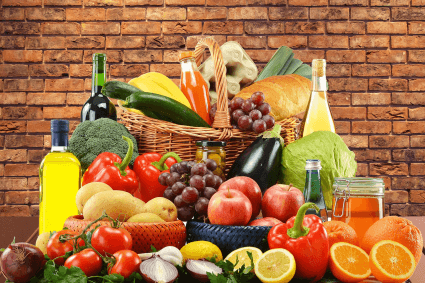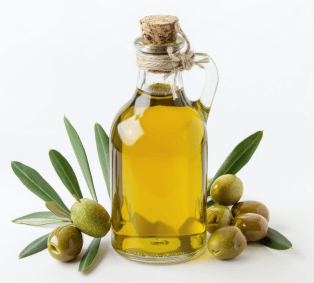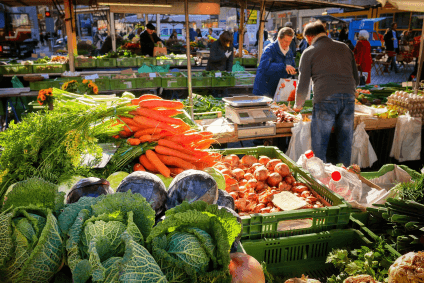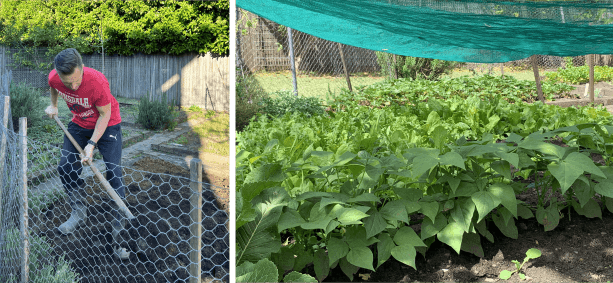What is the Mediterranean Diet?
How the Mediterranean Diet Nourishes Body, Mind, and Community
When someone asks me, “What is the Mediterranean diet?” I describe it as more than just a diet. It’s a lifestyle filled with vibrant colours, rich flavours, and shared meals. This is the essence of what the Mediterranean diet is. It draws inspiration from the traditional eating habits of countries like Greece, Italy, and Spain, along with regions in France, Turkey, Morocco, and Portugal.
This lifestyle celebrates whole foods, healthy fats, and the joy of dining with loved ones. Picture a table spread with fresh vegetables, fruits, whole grains, fish, legumes, nuts, and olive oil. Add the occasional indulgence of cheese or a glass of wine, enjoyed in good company, and you’ve got the essence of the Mediterranean way.
Key Ingredients of What is the Mediterranean Diet
What I like about the Mediterranean diet is its simplicity and adaptability. Here’s a breakdown of what makes it special:

Fruits and Vegetables
Aim to fill your plate with a rainbow of colours. As you start cooking with more seasonal produce, you’ll find nature’s flavours are incredibly satisfying.
Whole Grains
Think whole grain sourdough, brown rice, oats, rye, corn, buckwheat, and quinoa for sustained energy. A bowl of hearty brown rice and mixed bean salad has become one of my go-to quick meals.
I eat pasta in moderation. When I do, I prefer whole grain pasta because I like its texture, and I enjoy it cooked 'al dente.'
And who can resist a slice of tangy, crusty sourdough? It’s warm, tangy, and has that perfect chewy texture that makes every bite truly satisfying.

Healthy Fats
Olive oil is the star here, with its rich monounsaturated fats perfect for salads or dipping bread. It’s a wonderful butter alternative and opens up new flavours. My other healthy fats are avocado, nuts, seeds, and fatty fish like salmon and sardines.
Fish and Seafood
Two to three times a week, I enjoy fish like salmon, sardines, trout, tuna, or white fish like barramundi or cod. Grilling or baking with herbs keeps the skin crispy and the flesh tender. Anchovies, mackerel, and herring, along with shellfish such as prawns (shrimp), crab, scallops, and clams add variety, too.

Legumes, Nuts, and Seeds
Beans and lentils are fantastic plant-based proteins. Nuts like almonds and walnuts make a great snack, as do roasted chickpeas. Seeds such as chia, flax, and sunflower are also excellent sources of nutrients, adding a crunch and health boost to salads and yogurt. Incorporating beans in salads makes for a hearty, satisfying meal.
Poultry in Moderation
Poultry, especially lean options such as chicken and turkey, is a great source of protein. It’s usually enjoyed in moderation. I usually eat chicken and sometimes turkey two to three times a week.
Dairy in Moderation
Dairy like milk, cheese, and yogurt is best enjoyed in moderation. I only have milk in my coffee and cheese usually a few times a month. Yogurt is a more frequent indulgence, sometimes on a daily basis, often paired with fruit and homemade granola.
Red Meat Sparingly
Red meat is best kept to a minimum, with small portions of lean beef or pork. Personally, I don’t like red meat due to personal taste preferences.
Wine in Small Amounts
A small glass of red wine with dinner feels like a treat. I rarely drink, but when I do, it’s a glass shared with family or friends.
Embracing Seasonal Eating in the Mediterranean Lifestyle
Seasonal eating has always been a part of my life, and it’s a key aspect of what is the Mediterranean Diet. It focuses on enjoying fruits and vegetables that are naturally in season. By eating what's in season, your meals not only taste better, but it's genuinely beneficial for your health and you also contribute to a healthier environment.

Let's dive into why reaching for those ripe summer tomatoes or crisp autumn apples can be a game-changer.
Nutritional Quality
When you go for fruits and veggies in their prime season, they're usually picked at peak ripeness, meaning they're packed with vitamins, minerals, and antioxidants. Compare that to out-of-season produce, which is often harvested early and shipped from miles away, losing some of its nutritional punch along the way.
Yummy Flavours
Then there's the unbeatable flavour and freshness of seasonal produce. Local, in-season crops don't have to travel far, so they make it to your plate with all their taste intact.
For example, in summer, you can indulge in sweet tomatoes, juicy strawberries, and peaches, sweet tangy cherries, along with other delicious stone fruits. In autumn (fall), you can enjoy earthy pumpkins, crispy apples, and the sweet, slightly chewy texture of figs.
Variety is Fun
Speaking of variety, eating seasonally encourages you to switch up your diet throughout the year. This not only keeps meals exciting but ensures you're getting a range of nutrients, aligning your eating habits with nature’s cycles.
Environmental Impact
Eating seasonally also helps the environment. Local produce doesn't need to be transported long distances, which cuts down on carbon emissions. Plus, buying from nearby farms supports sustainable practices and keeps local agriculture thriving.
It’s Cost-Effective
Your wallet will thank you too. When fruits and veggies are in abundance, prices drop. Seasonal eating can stretch your grocery budget further while still giving you a variety of foods to enjoy.
Reduced Chemical Exposure
Seasonal and local produce are less likely to be laden with chemicals for preservation. This means fewer additives and healthier meals on your table.
Connecting with Your Community and Supporting Local Farmers
Buying seasonal produce often means visiting local farmer’s markets or farms. Buying their produce strengthens the community and boosts the local economy. You’re not just buying food, you’re investing in your community's food security.
This also gives you a chance to meet the people who grow your food, learn about their farming methods, and even discover new ingredients to try out in your recipes. It adds a personal touch to your cooking and makes it more enjoyable.
Connection to Nature
There's something grounding about eating with the seasons. It helps you reconnect with nature’s rhythm, fostering a mindful approach to what you eat and how it affects your health and the earth.
The Mediterranean Way
Finally, incorporating seasonal foods fits right in with the Mediterranean philosophy of eating fresh, whole ingredients. It’s not just about being healthy, it’s also about appreciating the different seasons and the variety they bring to our food.
In a nutshell, eating seasonally isn't just better for you, it's a step towards a more sustainable and connected way of living.
So, next time you reach for those ripe summer tomatoes or crisp autumn apples, remember you’re not just enjoying a meal, you’re embracing what is the Mediterranean Diet lifestyle.
How to Eat Seasonally?
Eating seasonally involves choosing foods that are in season in your region, which can vary depending on climate and geography. Here are some practical steps to help you eat seasonally:
Know Your Seasons
Familiarise yourself with what fruits and vegetables are in season in your area during different times of the year. Many regions have seasonal guides available, and your supermarket or local farmer’s markets can also provide insights.
Visit Farmer’s Markets

Local farmer’s markets are a great way to find fresh, seasonal produce. Engaging with local farmers can provide information about when certain foods are harvested and how to prepare them.
Join a Community Supported Agriculture (CSA) Program
CSAs allow you to buy a share of a farm's produce for a season. You receive a box of seasonal fruits and vegetables regularly, which encourages you to eat what is currently being harvested. To find a CSA near you, just do a quick online search or ask around in your community.
Grow Your Own
When my parents moved to Australia from Italy, setting up a large vegetable garden was high on their to-do list. It became our go-to source for fresh produce, providing us with a variety of veggies nearly all year. As a kid, I got hands-on experience with different vegetables and learned how to harvest them myself. Even now, I keep a smaller version of that garden, planting seasonal veggies and keeping the tradition alive.

Plan Your Meals
When planning your meals, focus on incorporating seasonal ingredients. Check what’s in season and create your menu around those items. This can also help diversify your diet throughout the year.
Preserve Seasonal Foods
If you find an abundance of seasonal produce, consider preserving them through canning, freezing, or drying to enjoy them later. This is especially useful for summer fruits and vegetables.
Experiment with New Recipes
Seasonal ingredients often require different preparation methods. Explore new recipes that highlight the flavours and textures of the current season's produce.
Go Organic When Possible
Organic produce tends to be fresher and more flavourful. When you can, choose organic seasonal fruits and vegetables to maximise health benefits.
Educate Yourself About Local Food Sources
Learn about local farms, food cooperatives, and other sources of seasonal produce. Many regions have online directories where you can find local food sources.
Be Flexible
Sometimes, seasonal produce can vary based on climate changes or unusual weather patterns. Be open to adapting your meals based on what is available.
Connect with Nature
Take time to appreciate the seasonal changes in your environment. This can enhance your overall mindfulness about food and health.
By following these steps, you can make seasonal eating a regular part of your lifestyle, leading to healthier choices and a more sustainable way of Mediterranean living.